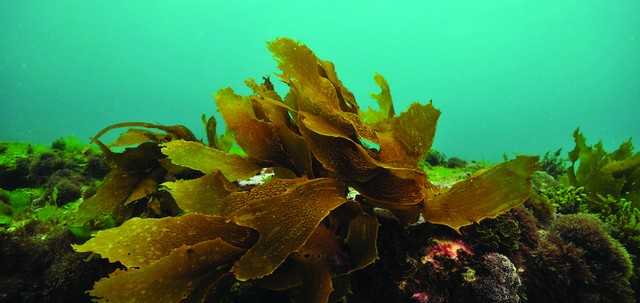Seaweed science

Seaweeds have an impressively wide range of uses. Different species are used as key ingredients for food, cosmetics and fertilisers, to name a few. Seaweeds have unique properties, and Scion is one year into a new project to investigate if cellulose from seaweed could make your smartphone battery perform better, for example.
Wide and long cellulose
Cellulose is a structural component in the primary and secondary cell walls of plants and algae. Seaweed cellulose is unique, it forms long and wide cellulose chains. Land-based plants have a chain width up to five nanometres. In contrast, the cellulose chains in seaweeds can be 20 nanometres or more across (the exact number of chains and their width varies between species).
The width of cellulose chains is known to affect heat transfer. Scion scientist Dr Stefan Hill is leading a project to learn more about this relationship.
The project is looking to extract cellulose from seaweed, physically characterise it, and test its thermal conductivity. The seaweed cellulose will then be incorporated into paper and plastic composites to evaluate their thermal properties.
Making headway
As the first year of a three-year project draws to a close, a lot of progress has been made.
Selected species for testing included Undaria, Ecklonia, and one other. The third seaweed will be one of 20 samples harvested by project partner AgriSea and will be selected based on its properties and availability to harvest sustainably.
With samples in hand, Scion staff mechanically pulped the seaweed with equipment traditionally used in wood fibre processing. With seaweed reduced to fibres, a chemical treatment was then used to extract seaweed cellulose nanocrystals.
Stefan and the team from Scion, along with Ashleigh Browne from AgriSea, then took the samples to the Australian Synchrotron for x-ray diffraction tests. The synchrotron generates high energy electron beams that are shot at the sample. By looking at the way the beams are scattered when they hit the sample, it is possible to work out its structure and crystal size.
Initial results are still undergoing analysis but have revealed some interesting trends to explore further.
Far reaching impact
Stefan and his team hypothesize that seaweed cellulose crystals have a heat transfer rate that is at least twice as fast as currently reported celluloses. If they are proven right, seaweed cellulose could have a variety of uses in electronic applications in technology like smart phones where fast and effective heat transfer is essential for passively cooling batteries to extend their life (and stop them catching fire).
The project received funding from the Ministry of Business, Innovation and Employment’s Endeavour Fund, as a Smart Idea
